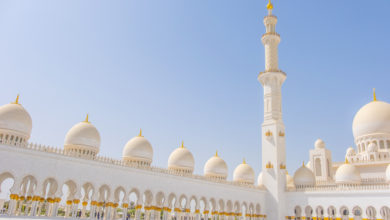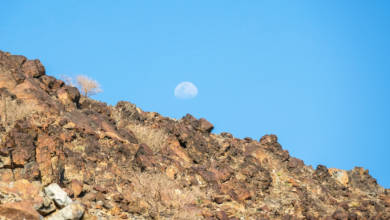The history of the world’s great mosques
For the Holy Month of Ramadan let’s have a look at the history of some of the greatest mosques.
The third Mosque we are going to know more about is the Great Mosque of Damascus.
Great Mosque of Damascus, also called Umayyad Mosque, the earliest surviving stone mosque, built between AD 705 and 715 by the Umayyad Caliph al-Walīd I. The mosque stands on the site of a 1st-century Hellenic temple to Jupiter and of a later church of St. John the Baptist. Some Syrio-Roman fragments remain in the structure, as does a shrine supposedly enclosing a relic honoured by Muslims as well as Christians, the head of St. John the Baptist.
The mosque occupies a huge quadrangle 515 by 330 feet (157 by 100 m) and contains a large open courtyard surrounded by an arcade of arches supported by slender columns. The liwan, or hall of worship, running the length of the south side of the mosque, is divided into three long aisles by rows of columns and arches. A transept with a central octagonal dome, originally wooden, cuts across the aisles at their midpoint. The marble grilles that cover the windows in the south wall are the earliest example of geometric interlace in Islāmic architecture. The walls of the mosque were once covered with more than an acre of mosaics depicting a fanciful landscape thought to be the Quʾrānic paradise, but only fragments survive. The mosque was destroyed by Timur in 1401, rebuilt by the Arabs, and damaged by fire in 1893. Although it could not be restored to its original splendour, the mosque is still an impressive architectural monument.
Imagine you are a Muslim in the 15th century arriving at the main east entrance to the mosque. You would open a massive Roman door and come into a portico (open-air covered area) lined with columns. Some arches above you would be round, some semi-circular and others slightly pointed.
Marble decoration would have covered the lower section of the outer walls and you might have been reminded of the Greco-Roman art that influenced its design. These decorations showcased palaces, houses and trees next to the Barada river.
Marble grilles would be seen with geometric patterns illuminating the long, narrow rooms along the eastern and western sides. Unfortunately, much of the original decorations were destroyed in the fire of 1893.
As you walk into the courtyard, you would see the ablutions fountain where you go to wash before you pray in the middle of the courtyard. An octagonal chamber on eight pillars with a pool underneath is on the far end of the courtyard. You would recognize this far structure as a treasury, typical in early mosques. This is where the wealth of the community would be kept.




